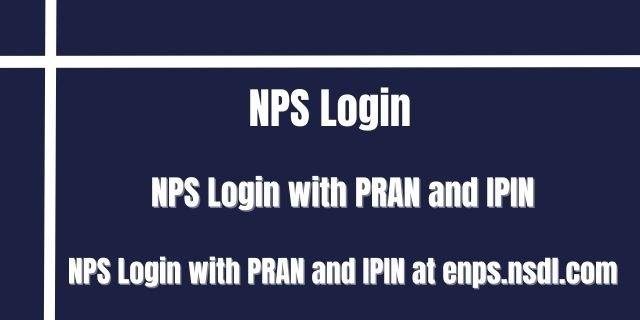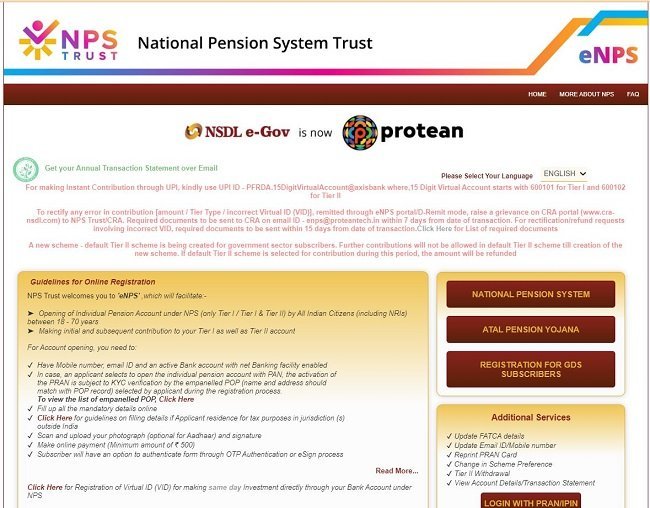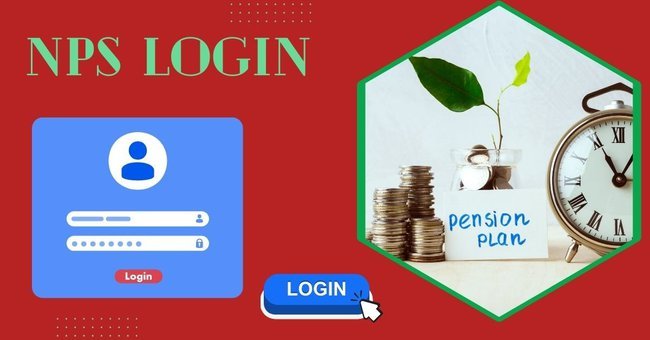NPS Login has been launched by the Central government of India. All the details about this portal and other important details about this portal will be provided here.NPS Login is an online portal provided by the Government of India. This online portal will provide all the important details for registration and other processes. You can log on to the NPS Online portal and get yourself registered for this scheme. We will be providing all the important details such as required documents, eligibility criteria, benefits of this online portal, and how to do the registration and log also. Keep reading this article for further information about NPS Login.
Overview of NPS Login
Logging in to NPS is easy. Simply go to the official NPS website or app, establish an account, and proceed forward. All Indian citizens (which includes NRIs) between the ages of 18 and 70, whether they are residents or not, can access the NPS Login. Additionally, as of January 1, 2004, all Central Government employees were required by law to make contributions to the National Pension System. Thus, this service became automatically available to all Central Government employees on January 1, 2004. This functions similarly to opening an app that lets you see your financial future. It only takes a few clicks to manage your investments, monitor your savings, and even improve your future by making extra contributions with NPS Login.

Also Read: Saral Pension Yojana
About National Pension Scheme
The Indian government launched the national pension scheme, which was launched in January 2004. It was first restricted to government workers, but five years later, in 2009, it became available to all Indian citizens, regardless of the industry in which they were working. Throughout his working life, the participant in this system must make regular contributions to his pension account. NPS is a carefully monitored pension plan that provides a low-risk return while building up the retirement corpus. This government-sponsored programme helps reduce the tax liability under sections 80CCD(1) and 80CCD(1B) by up to 2 lakhs. People can benefit from increased transparency and portability in their retirement savings with an NSDL NPS login with Pran.
Key highlights of NPS Login
| Name of the scheme | NPS Login |
| Launched by | The government of India |
| Required Age | Up to the age of 70 Years |
| Objective | To provide online facility to the Working class of India in logging into the NPS Accounts |
| Beneficiaries | Citizens of India |
| Application mode | Online |
| Official site | National Pension System Portal |
Eligibility Criteria
- If you meet the following requirements, you are eligible to open an NPS account as an Indian citizen, regardless of whether you live there or not: When submitting your application online through e-NPS or to the PoP / PoP-SP,
- You must be between the ages of 18 and 70.
- According to the Subscriber Registration Form (SRF), you must abide by the Know Your Customer (KYC) guidelines.
- You must provide all the necessary documentation for KYC compliance.
Also Read: NPS Vs OPS
Benefits of National Pension Scheme
- As per the National Pension Scheme, a worker who is a member of this system is required to contribute to his pension account regularly during his working life.
- NPS is a closely watched pension plan that increases the retirement corpus while offering a low-risk return.
- Employee tax benefits on self-contribution The following tax advantages are available to employees who make NPS contributions on their contributions:
- Within the overall Rs. 1.50 lakh ceiling under Sec. 80 CCE, tax deductions up to 10% of pay (Basic + DA) are allowed under section 80 CCD (1).
- In addition to the overall cap of Rs. 1.50 lakh under Sec. 80 CCE, there is a tax deduction of up to ₹50,000 under section 80 CCD(1B).
- Benefits of employer contributions to employees’ taxes amounts donated by the employer under Section 80 CCD (2) may be deducted from taxes up to 10% of pay (Basic + DA) (14% if Central Government makes such a contribution) over the Rs. 1.50 lakh cap stipulated under Section 80 CCE.
Also Read: Raksha Pension Shikayat Nivaran Portal
Required documents
- School leaving certificate
- Matriculation certificate
- Degree certificate
- Bank account statement
- Water Bill
- Ration Card
- Electricity bill
- Telephone bill
- Bank account statement
- Water Bill
- Ration Card
- Voter ID
- Driving licence
- Passport
- AADHAR card
Services available under NPS Login
- Annual Email Transaction Statement
- Put money into NPS
- Turn on the Tier II Account
- FATCA Adherence
- Understand Your Pension (NPP)
- Consent of Subscriber to provide ASP with contact details
- Requests for Photo-Signature Modification and Subscriber Registration
- Status with Receipt Number in Hand
- My Utility for Withdrawing
- Status of PRAN Card Dispatch
- Complaint/Inquiry Status
NPS Login online
- To access the NPS login, go to the NSDL Portal.
- By going to official NPS site and clicking on it

- Click “Login using PRAN/IPIN” after that.
- Enter the password and PRAN number on the Login screen. After completing the captcha, press the “submit” button.
- Your E-NPS account is now accessible to you.
FAQS
NPS is a carefully monitored pension plan that provides a low-risk return while building up the retirement corpus. This government-sponsored programme helps reduce the tax liability under sections 80CCD (1) and 80CCD(1B) by up to 2 lakhs
You must be between the ages of 18 and 70. According to the Subscriber Registration Form (SRF), you must abide by the Know Your Customer (KYC) guidelines.
Yes, provided they satisfy the eligibility criteria. However, contributions made by the NRIs are regulated as per the framework set forth by the RBI (Reserve Bank of India) and FEMA (Foreign Exchange Management Act), which may be updated periodically.
